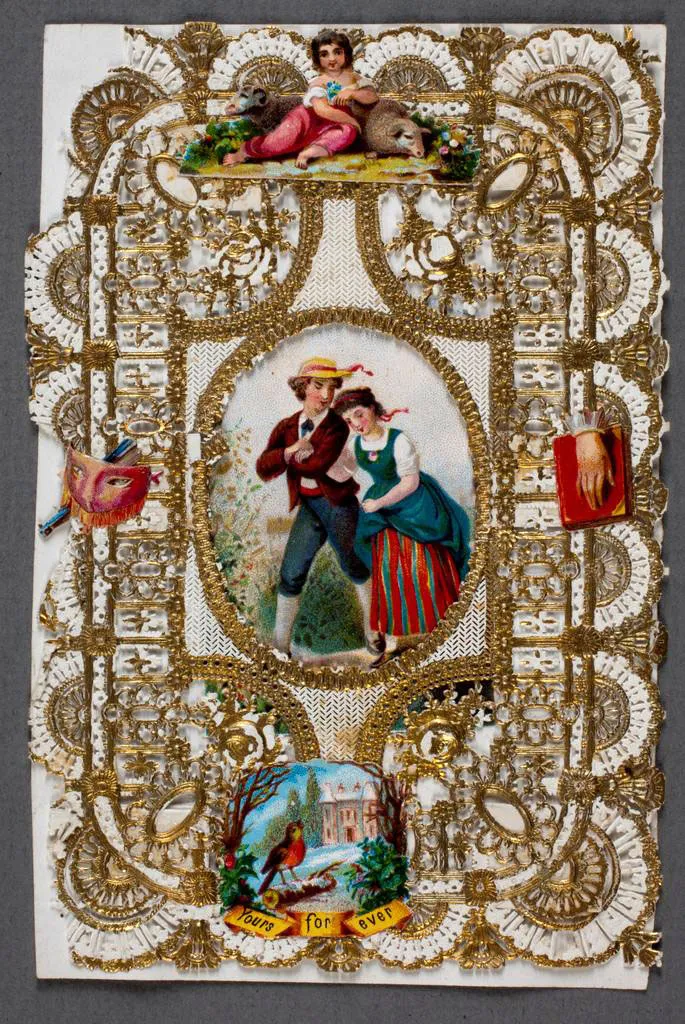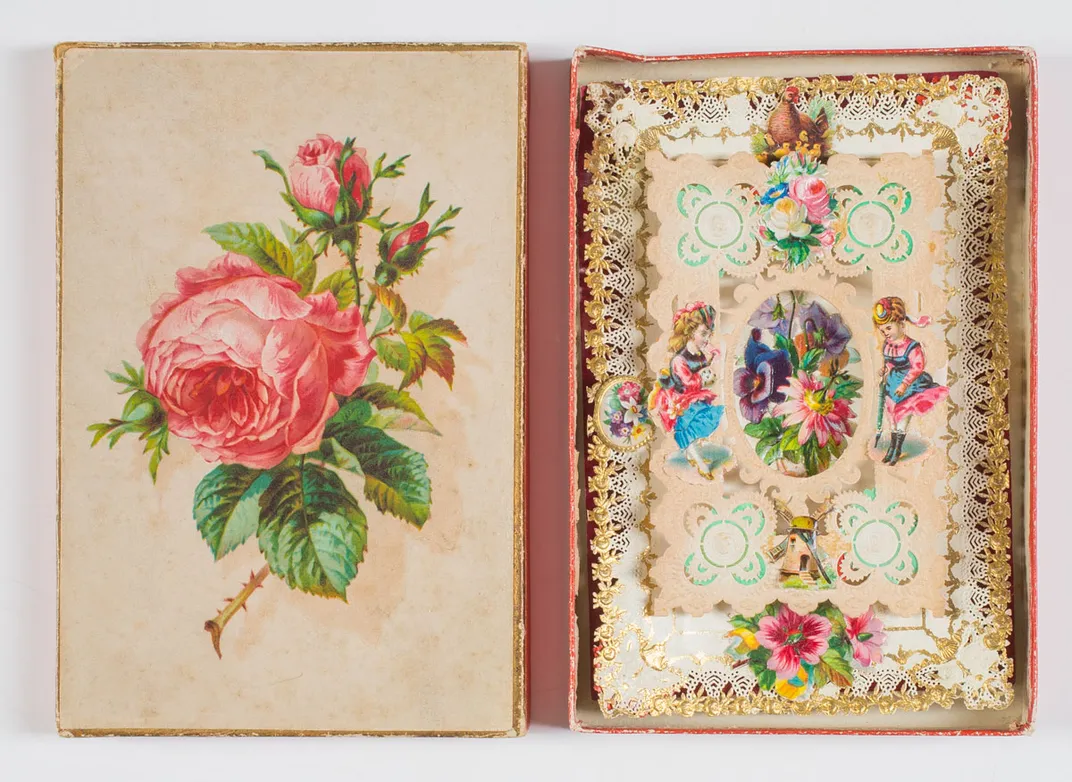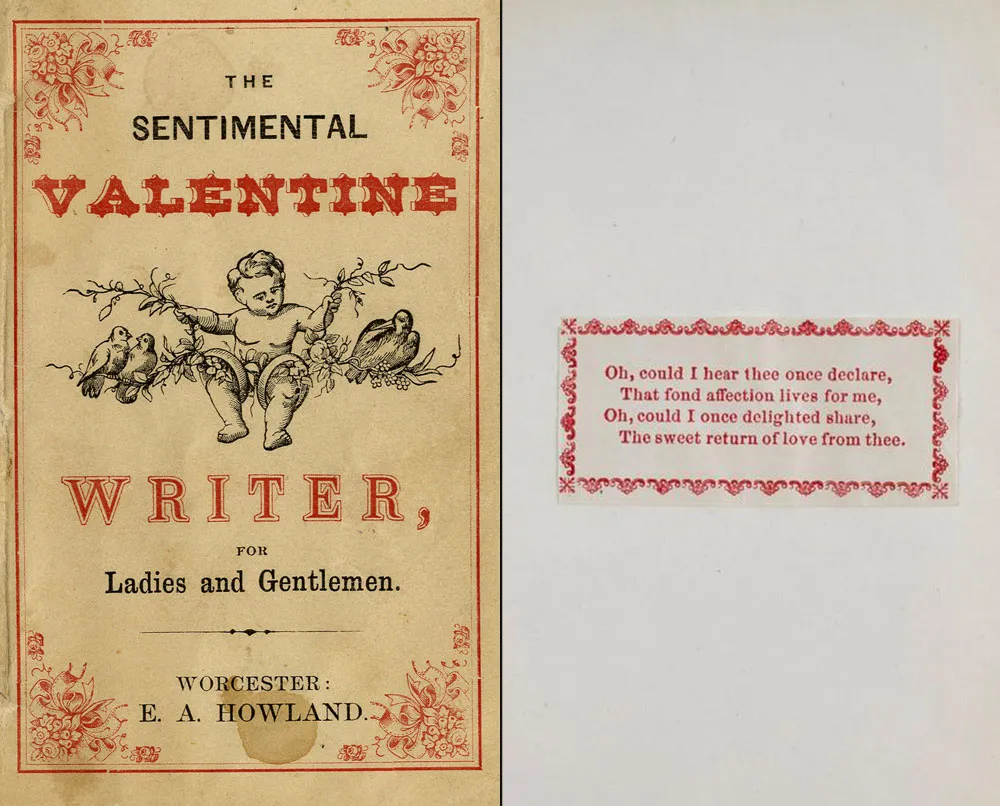How to Make an Authentic Civil War Valentine
Handmade Valentine cards were popularized (and commercialized) in the U.S. during the Civil War years
/https://tf-cmsv2-smithsonianmag-media.s3.amazonaws.com/filer/95/42/95425d86-3062-469b-8810-f8b44b00d8e5/howland3.jpg)
The history of Valentine cards in north America owes a lot to Esther Howland. She popularized the cards just when they were needed most: during the Civil War.
Valentines were especially important during the Civil War when husbands and wives, and young lovers were separated not only by miles but by the fear they would never see each other again,” writes novelist Joan Itaska in her long-running Civil War history blog.
Howland turned DIY cards into an industry, so that now she is sometimes called "The Mother of the Valentine." Follow her advice to make your own sweet note.
1. Prepare to do it yourself (or enlist some friends)
At a time before printing technology had the sophistication it does today, making a really beautiful valentine at a price most people could afford meant doing it by hand.
“Beautiful and elaborate European Valentines were available in mid-nineteenth century America, but their cost and rarity limited their market to a wealthy elite,” writes the Library of Congress’s Mary Champagne. And card-makers in New York made lithographed Valentines, but they “could hardly compare to the handcrafted valentines Esther Howland made famous.”
Howland began selling valentines that looked like traditional handmade cards. But hers were made using an all-woman assembly line in her home, Itska writes.

2. Gather up colored paper, lace, ribbon, and maybe some old magazines.
Howland’s cards were made collage style: layers and layers of pasted-together objects. She often used brightly colored scraps of paper underneath light-colored lace to get the benefit of negative space.
Don’t be afraid to put on a lot of layers. A lot. If you’re thinking this could make the card too thick, consider the “lift-up” Valentine — another innovation Howland is credited with. These cards were meant to be sort of three-dimensional, because of the number of layers they had, and were “particularly effective when placed in an ornamental box made specifically to display these special valentines,” Champagne writes.

3. Don’t write anything on the outside.
Howland is known for a number of innovations in the valentine industry, but maybe the one that shows that she really knew her market was the fact that her cards didn’t come with a motto or verse on the outside.
After all, as she knew, your love is unique and won’t always fit with a premade card. “It is frequently the case that a valentine is found to suit, but the verse or sentiment is not right,” she stated.
As a solution, Howland’s valentines had a verse on the inside. In 1879, after incorporating as The New England Valentine Co., her company started publishing a Valentine Verse Book that had 131 verses inside it printed in multiple colors. “A verse could be chosen from the book, cut out and pasted over the original verse inside the card,” writes Champagne.
Howland turned her card-making business into an empire that came to cater to other holidays as well, ultimately selling her business four decades later to her main competitor.
